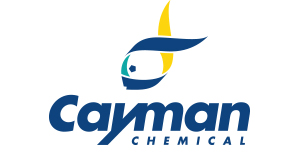Phosphatidylserine (soy) (sodium salt), CAS 383908-63-2
Phosphatidylserine (soy) (sodium salt), CAS 383908-63-2
Artikelnummer
CAY25847-25
Verpackungseinheit
25 mg
Hersteller
Cayman Chemical
Verfügbarkeit:
wird geladen...
Preis wird geladen...
Formulation: A solid
Purity: ≥95%
Shelf life (days): 1460
CAS Number: 383908-63-2
Notes: Phosphatidylserine is a naturally occurring phospholipid that comprises 2-10% of total phospholipids in mammals and is enriched in the central nervous system, particularly the retina.{38744} It is anionic and found mainly on the inner leaflet of the cell membrane. It is biosynthesized from phosphatidylcholine (Item Nos. 24343 / 24370) or phosphatidylethanolamine (Item Nos. 16878 / 24332) by phosphatidyl synthase 1 (PSS1) or PSS2, respectively, in the endoplasmic reticulum (ER) and can be reversibly converted back by the same enzymes. It can also be irreversibly converted to phosphatidylethanolamine by phosphatidylserine decarboxylase in the mitochondria. Phosphatidylserine binds to T cell immunoglobulin mucin type 1 (TIM-1) and TIM-4 receptors as well as brain-specific angiogenesis inhibitor 1 (BAI1), leading to anti-inflammatory and anti-atherosclerotic effects.{38745} It is also a cofactor involved in the activation of various signaling pathways through activation of protein kinase C, neutral sphingomyelinase, and c-Raf-1 protein kinase among others.{38744} Phosphatidylserine is externalized during apoptosis by scramblases in the plasma membrane as a signal for phagocytes to engulf the cell.{38746} This product contains phosphatidylserine molecular species with variable fatty acyl chain lengths at the sn-1 and sn-2 positions.
Purity: ≥95%
Shelf life (days): 1460
CAS Number: 383908-63-2
Notes: Phosphatidylserine is a naturally occurring phospholipid that comprises 2-10% of total phospholipids in mammals and is enriched in the central nervous system, particularly the retina.{38744} It is anionic and found mainly on the inner leaflet of the cell membrane. It is biosynthesized from phosphatidylcholine (Item Nos. 24343 / 24370) or phosphatidylethanolamine (Item Nos. 16878 / 24332) by phosphatidyl synthase 1 (PSS1) or PSS2, respectively, in the endoplasmic reticulum (ER) and can be reversibly converted back by the same enzymes. It can also be irreversibly converted to phosphatidylethanolamine by phosphatidylserine decarboxylase in the mitochondria. Phosphatidylserine binds to T cell immunoglobulin mucin type 1 (TIM-1) and TIM-4 receptors as well as brain-specific angiogenesis inhibitor 1 (BAI1), leading to anti-inflammatory and anti-atherosclerotic effects.{38745} It is also a cofactor involved in the activation of various signaling pathways through activation of protein kinase C, neutral sphingomyelinase, and c-Raf-1 protein kinase among others.{38744} Phosphatidylserine is externalized during apoptosis by scramblases in the plasma membrane as a signal for phagocytes to engulf the cell.{38746} This product contains phosphatidylserine molecular species with variable fatty acyl chain lengths at the sn-1 and sn-2 positions.

 English
English







